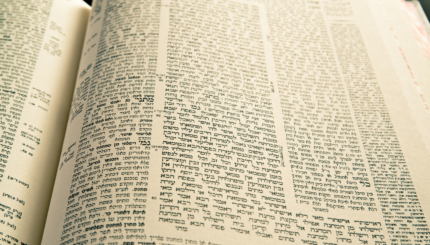This past Shabbat as I walked to synagogue for mincha, afternoon services, I was thinking about how I would introduce our first ever complete women’s tefillah, prayer group. With the strong and thoughtful support of our rabbi, our synagogue hosts a women’s Torah reading on Simchat Torah, women’s megillah reading on Purim day, and hoshanot for women on Sukkot. However, we have never prayed together through a full prayer service. This year, we chose to add a women’s tefillah service for Shabbat mincha to our women’s programming, in order to create an opportunity for many women to actively participate in the service, without putting too much stress on our inexperienced Torah readers. In addition, we do not want to separate ourselves from the congregation and since few women typically show up in our synagogue for mincha, a women’s tefillah service would not affect the community negatively.
The prayer service was beautiful. Three teenagers delivered short
divrei Torah
between
aliyot
. Women read Torah, led prayers, and served as gabbaiot for the first time. One of our Torah readers had a baby in a front carrier, and a little girl holding her hand. The sound of women’s voices lifted in song, especially the voices of the young girls who led Anim Zmirot at the end (we added it in, why not?), was different and joyful. One of my friends, who attended just because she is my friend and not because she was particularly interested, spoke about how spiritually uplifted she felt. Another spoke of the impact of seeing all these women walking to synagogue for mincha, so different from the usual all-male parade.
What was accomplished by a single women’s tefillah service?
- The mitzvah of praying mincha was observed by women, most of whom would not have prayed on their own.
- Women’s tefillah became a little more accepted in our community.
- We were able to honor our synagogue president with an Aliyah LaTorah.
- Women had the opportunity to lead a prayer service.
- Girls realized that they could participate, not just spectate.
- Women connected together as a community.
- Women, who rarely, if ever, arrive on time for shacharit on Shabbat, were present throughout the service.
A single event does not change a community. Nor will its modesty sway those who think that we are radicals. But I have found that, over time, the response to a women’s service shifts from “No way,” to “It’s okay for you, but it’s not my thing,” to “Maybe I’ll come,” to attending a women’s tefillah, to accepting an aliyah, to “Can I read next time?”
My three young adult daughters, although committed to a halakhic life, struggle fiercely with the dissonance between their place in the religious sphere and their ability to lead in the outside world. It is painful for me to see how hard it is for them to hang on to the Judaism that forms such a huge framework for their lives. I think if I allowed myself to feel as they do, I would break. I am awed by the strength of their commitment to a Judaism that makes them feel less valued and more like second class citizens. And so I must effect change, incrementally slow as it may be, so I can have hope for a religion that will give all of us a portion in God’s Torah.
megillah
Pronounced: muh-GILL-uh, Origin: Hebrew, meaning "scroll," it is usually used to refer to the scroll of Esther (Megillat Esther, also known as the Book of Esther), a book of the Bible traditionally read twice during the holiday of Purim. Slang: a long and tedious story or explanation.
mitzvah
Pronounced: MITZ-vuh or meetz-VAH, Origin: Hebrew, commandment, also used to mean good deed.
Shabbat
Pronounced: shuh-BAHT or shah-BAHT, Origin: Hebrew, the Sabbath, from sundown Friday to sundown Saturday.
Torah
Pronunced: TORE-uh, Origin: Hebrew, the Five Books of Moses.



